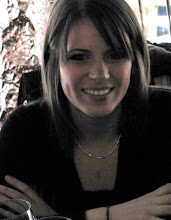 A flash mob is a large group of people who assemble suddenly in a public place, perform an unusual action for a brief time, then quickly disperse.
A flash mob is a large group of people who assemble suddenly in a public place, perform an unusual action for a brief time, then quickly disperse.Flash mobs, to use a terrible pun, were quite literally a flash-in-the-pan phenomenon. Created by a man known only by "Bill" in summer of 2003, they spread globally with rapid pace and died out almost completely by the winter of that same year. In the summer of 2005, flash mobs officially "sold out" so-to-speak, with Ford's "flash concerts" that promoted their latest model, the Fusion. This past March, Harper's magazine reflected upon the flash mob phenomenon and simultaneously revealed its inventor: Bill Wasik, who just happens to be the senior editor at Harper's.
The first attempt was unsuccessful after the targeted retail store was tipped off about the plan for people to gather. Wasik avoided such problems during the second flash mob. To begin the experiment, Wasik sent a simple email on May 27, 2003 to about 60 friends and acquaintances. The email was vague, forwarded to himself by himself from an unused email address. It asked people to synchronize their watches and meet in a given location in New York. To avoid looking staged, he asked people to approach from different directions based on their birth month. Further instructions were to be given at the site by a random person via a slip of paper. The first mob failed due to the police receiving knowledge about it, but the second, which took place in the rug department of Macy's, was a success. About 200 people came into Macy's and informed clerks that they were looking for a love rug for their commune that they all lived in and that they made all their purchase decisions as a group. Wired News wrote about it two days later, and the flash mob spread rapidly to other cities. Subsequently, 200 people flooded the lobby and mezzanine of the Hyatt hotel in synchronized applause for about fifteen seconds, and a shoe boutique in SoHo was invaded by participants pretending to be tourists on a bus trip. The New York Times, in an effort to have a leg up on the story that other newspapers didn't, predicted (correctly) a backlash to the flash mob sensation. Wasik suspected as much, although the Times had impeccable timing on the story.
Wasik revealed that it was a self-fulfilling prophecy, an attempt to make fun of hipster culture, and above all a social experiment designed to demonstrate the joining urge of human beings. He planned the lifespan of the flash mob in its entirety, from the first flash mob to its backlash, downfall, and subsequent commercialization. While the content of the flash mobs themselves was apolitical (the ones Wasik organized, at least, although they were definitely transformed into political protest by some), the lifespan of the flash mob speaks volumes about digital networking, the nature of the human herding instinct, and the commercialization of everything.

0 comments:
Posta un commento